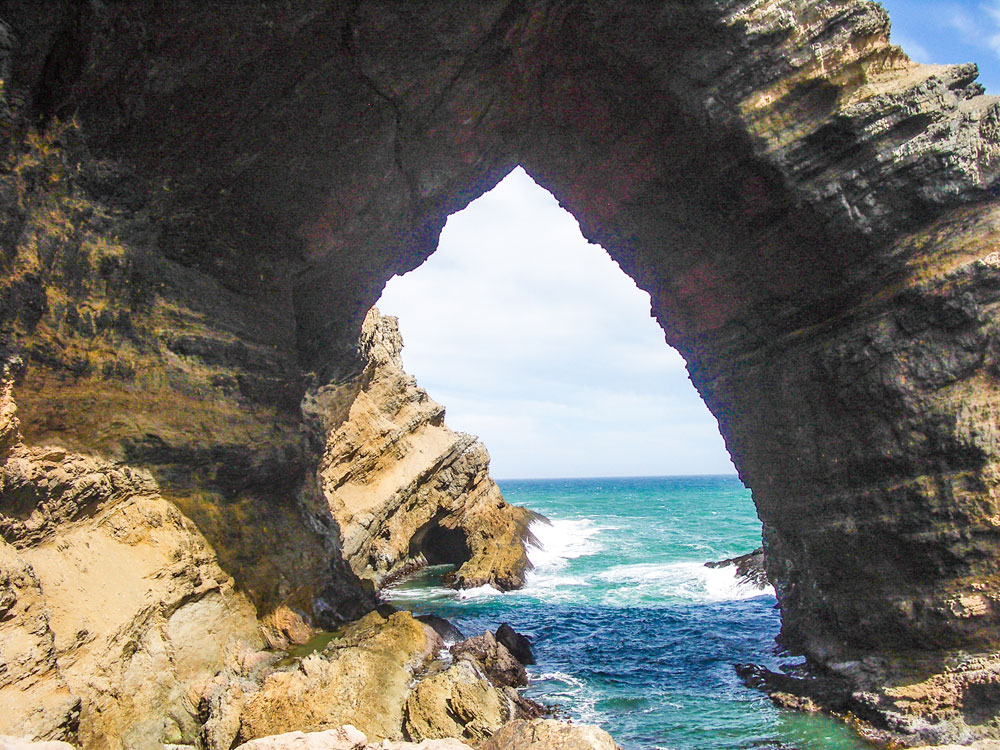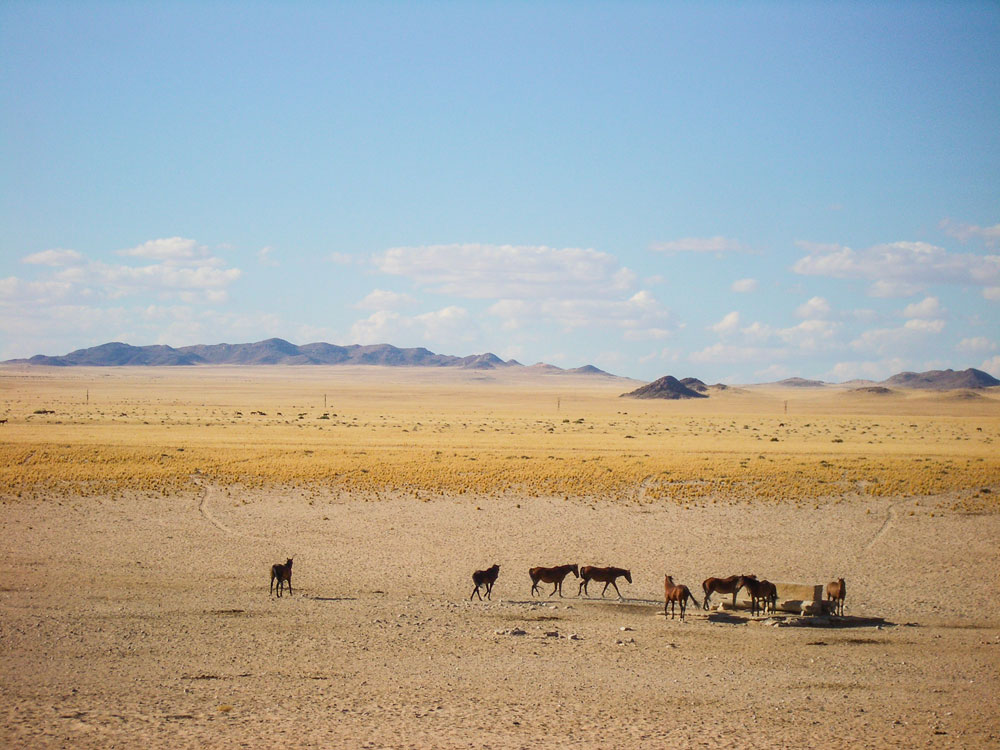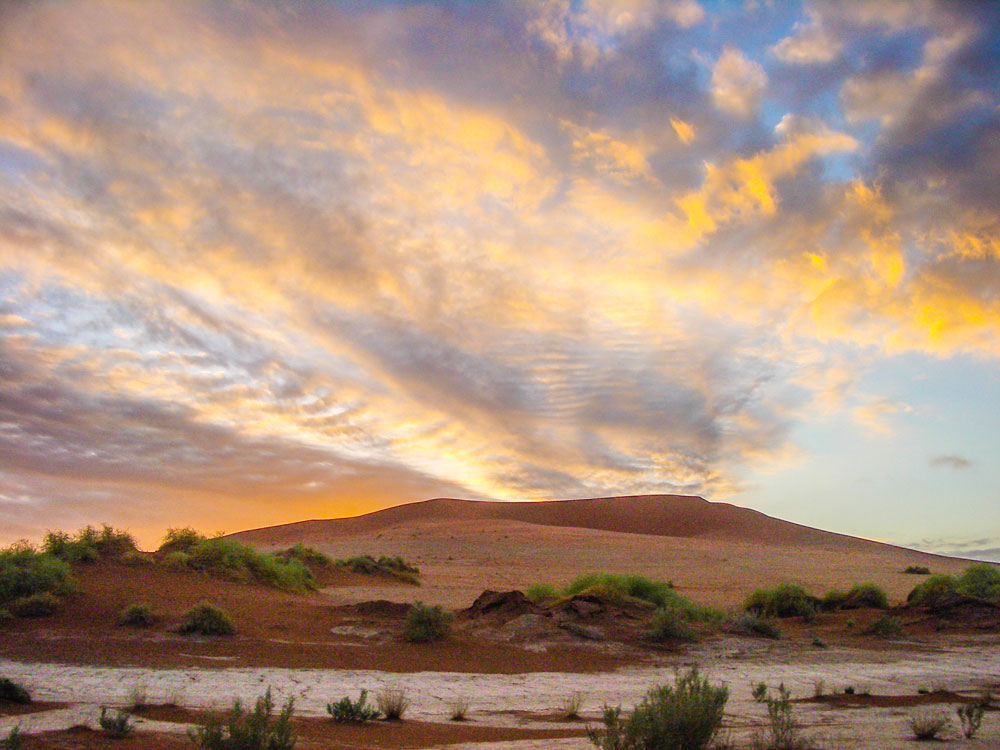Want to explore the desert landscapes of the northern Cape and southern Namibia? On this 10-day road trip, you will experience Sossusvlei, Fish River Canyon, Lüderitz, and the Richtersveld. This suggested overlanding route takes you where the vistas are endless and the solitude sits well in your soul. By Romi Boom
For now, road trips to remote travel destinations are the way to go – the arid areas of South Africa and southern Namibia are ideal. Fortunately, desolation does not mean barren, as you’ll discover on this itinerary with its variety of sights and vistas. Though the landscapes are vast and the tracks are lonely, our suggested route can be completed in 10 days.
As central starting point we’ve chosen Springbok, which can be reached on good roads from Cape Town or Gauteng.
Day 1: Sendelingsdrif
Your first stop is Sendelingsdrif, the access point to the |Ai-|Ais/ Richtersveld Transfrontier Park. The last stretch of the road before you arrive at the park entrance is quite corrugated so the going is slow. The rest camp comprises 10 chalets and a swimming pool. All the units have porches with a view over the Gariep (Orange River).
Day 2: |Ai-|Ais/ Richtersveld Transfrontier Park
On your first morning in the park, you’ll want to deflate your tyres if you haven’t done so already. To reach your campsite at De Hoop (12 stands) or Richtersburg (6 stands), you have to cross the rocky Akkedis Pass. The 40km distance should take about three hours and requires careful driving. Both camps enjoy a beachy setting right on the river bank. Pitch your tent under a thorn tree, in the soft sand, take a dip in the languid river and begin to chill. Be sure to stock up on firewood in Springbok so that you can make a large campfire for evening braais. Unless you heat water yourself, you’ll have to endure a cold shower.

Day 3: |Ai-|Ais/ Richtersveld Transfrontier Park
If you feel like seeing more of the park, it is well worth moving camp to a spot of utter seclusion. Spend the night at Kokerboomkloof campsite (8 stands), the best of the inland campsites. It is very rustic, no power, no water, no shower facilities, although there are dry toilets. The setting in a gorge amidst some of the park’s best rock formations, the utter silence and the night sky boggle the mind.

Day 4: Lüderitz
Exit the park via Tatasberg and the Helskloof Pass; this is slow going on about 60km of rocky road due to interminable ups and downs. It will take about four hours. You can enter Namibia at the Sendelingsdrif border post about 20km from Rosh Pinah. The border crossing features a pontoon across the Orange River.
T4A Tip: The running of the pontoon is affected by low water levels and flooding. It is best to check with the park office (Sendelingsdrif) whether the pontoon is in operation before finalising your route.

Before arriving in Lüderitz, take the turn-off to wander around Kolmanskop, the ghost diamond mining town. Time permitting, explore the local sights around town by taking a drive to the Diaz Cross or join a tour of the oyster processing factory to find out what happens to fresh oysters before they reach your table.
T4A Tip: The footbridge to reach the Diaz Cross has collapsed, but it is still possible to walk to the monument – just make sure to do so at low tide.

Day 5: Lüderitz
Not to be missed is an exclusive guided tour into the Namib Desert in the Tsau//Khaeb (Sperrgebiet) National Park. The only way to enter the park is with an official concessionaire of the Ministry of Environment and Tourism. The drive through the moon landscape is surreal. Highlights are stops at Grillenthal, the ruins of an early 19th-century pump station which supplied the diamond towns with water over a 600km long track system; Pomona, another ghost town from the diamond rush; and Bogenfels, a prominent rock arch with one leg in the desert and the other leg in the Atlantic Ocean.

Day 6: Sesriem
A day of amazing visions! Aus is 125km east of Lüderitz on the B4 (you will have passed it two days ago) and although the town has an interesting history (POW camp from WW1, Commonwealth gravesite), its biggest attraction is the feral horses. The best place to spot them is just before town at Garub Pan, where they come to quench their thirst. From Aus head straight to Sesriem and Sossusvlei if you want to capture the sunset over the bleached white salt and clay pan. Nearby Deadvlei features petrified tree stumps which are very photogenic in the late afternoon light.

Day 7: Sesriem / Sossusvlei
A day to stretch your legs, especially if you intend to crest the famous Dune 45. Sossusvlei, surrounded by some of the highest dunes in the world, is arguably Namibia’s most iconic attraction. Keen photographers may prefer to stay at Sesriem Rest Camp inside the park. This will allow you more time in the early morning and late afternoon to take photographs of the dunes before and after the park gates open and close. The best time of day to visit is early morning when the rust-red colour of the sand is brightest.

Also read: Four scenic detours to Sossusvlei
Day 8: Fish River Canyon
Today is a long drive so best to get a very early start. En route to the Fish River Canyon, it’s well worth detouring via Duwisib Castle. Jaw-dropping, medieval-looking, the stone fortress was built by a German baron for his bride in 1909. Then it’s onwards to the largest canyon in Africa, the best viewpoint of the mighty chasm being in the north at Hobas. First, make a pit stop at the Canyon Roadhouse to view the collection of vintage vehicles and grab a bite to eat. From Hobas, it’s 40km to the hot springs of Ai-Ais. The last 10km of the C10 access road is badly corrugated with sharp bends further slowing you down.


Day 9: Ai-Ais
The resort is the perfect place for R&R on your final day before heading home. There’s a large campsite, as well as standard and luxury chalets. The spa complex features indoor and open-air pools. The thermal baths have long been a very popular holiday destination. There are plenty of walks, the birding is good and photographers will delight in the rock formations.
Day 10: Springbok and home
Your vehicle will be covered in dust and you’ll probably be shaking sand from your shoes for days, but your heart will be full of the unforgettable landscapes.
Suggested route
| Day 1 | Springbok | Sendelingsdrif, SOUTH AFRICA | 250km |
| Day 2 | Sendelingsdrif | Richtersveld, De Hoop, SOUTH AFRICA | 100km |
| Day 3 | Richtersveld | Richtersveld, Kokerboomkloof, SOUTH AFRICA | 100km |
| Day 4 | Richtersveld | Lüderitz, Kolmanskop, NAMIBIA | 320km |
| Day 5 | Luderitz | Lüderitz, Bogenfels (guided tour), NAMIBIA | 260km |
| Day 6 | Luderitz | Sesriem via Aus, feral horses, NAMIBIA | 465km |
| Day 7 | Sesriem | Sesriem, Sossusvlei, NAMIBIA | 150km |
| Day 8 | Sesriem | Ai-Ais via Duwisib Castle/Hobas/Fish River Canyon, NAMIBIA | 650km |
| Day 9 | Ai-Ais | Ai-Ais hot springs, NAMIBIA | 0km |
| Day 10 | Ai-Ais | Springbok, SOUTH AFRICA | 240km |
Have you driven all or some of these Southern Desert tracks? Let us know what was the highlight for you in the comments below.


Stay an extra night at a unique and private campsite at the NamibRand Family Hideout between Luderitz and Sesriem.
Stayed at all those places during my 4 visits to Namibia – awesome.
Eagles Nest is beautiful but costly. Also try Tatasberg tented chalets in Richtersveld.
Stay an extra night at Eagles Nest at Klein Aus Vista (in Aus). The sunset view is amazing.